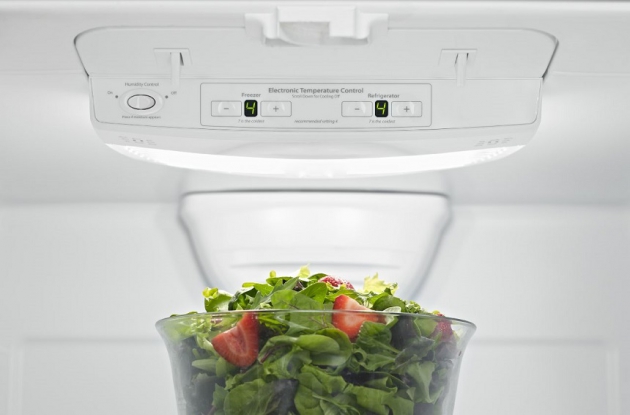Most of us don’t pay much attention to how our appliances work until they fail, and it’s time to replace them. A refrigerator is a hard working kitchen appliance that we rely on to keep our food at the optimal storage temperature. During the last year, it has become evident that we need to have ample stores of fresh food on hand to deal with emergency situations. In this article, we will take a closer look at refrigerators, examining how they work and the vital components that make it all happen.
How Does a Refrigerator Work?
A refrigerator prolongs the lifespan of perishable foods by storing them at the optimal temperature. This process slows down the bacterial growth in all foods to significantly extend the shelf life and ensure it’s safe to eat. The exact process is known as the refrigeration cycle, and it works by transferring heat from inside the refrigerator to the outside. This heat transference is key. It’s important to understand that the contents of the appliance are not cooled; rather the heat is removed to make the food cooler. This is achieved with condensation and evaporation, and we will cover this process in more detail later.
We have become accustomed to refrigerating and freezing foods to preserve the food we bring into our homes. Without refrigeration, milk will spoil in less than three hours due to the growth of harmful bacteria. The process of spoiling is slowed by refrigeration, but if you froze the milk in your freezer, the growth of bacteria would be stopped entirely. In fact, if you did freeze your milk, it could last for month, but sooner or later, freezer burn would affect the quality.
The Refrigeration Cycle Explained
As the name may suggest, the refrigeration cycle is a self contained system that continues to work as long as power is supplied to the appliance. The process is cyclical in nature, it follows nine key stages, and then the process is repeated.
- The refrigerator thermostat sensor senses the temperature set inside the appliance, and the compressor is automatically engaged to remove heat.
- The compressor draws liquid refrigerant present in the system into the refrigerator; it’s then pressurized and condensed, which turns it into gas.
- This raises the temperature of the refrigerant.
- The refrigerant gas is then pushed onto the condenser coils located on the rear of the refrigerator.
- The air in this location has a lower temperature than the gas, so it is quickly cooled back into a liquid state.
- As the cooling occurs, the heat in the refrigerant is dissipated.
- The cool refrigerant is then sent to an evaporator and distributed to the inner coils of the refrigerator and/or freezer.
- The refrigerant then absorbs the hotter air inside the appliance, and in turn, this lowers the temperature.
- The refrigerant then returns to a gaseous form, it goes back to the compressor, and the entire refrigeration cycle begins again.
5 Key Refrigerator Components
There are five main refrigerator components. They are compressor, evaporator, condenser, thermostat, and expansion valve:
- The Compressor: The compressor unit circulates the refrigerant in the system, and it acts as a motor and a pump at the same time.
- The Evaporator: The evaporator can be found in the refrigerator. Its function is to absorb any heat in the appliance to reduce the temperature.
- The Condenser: This is the system of pipes and fins that you can find at the rear of your refrigerator. This unit releases the heat that has been absorbed from inside the appliance, and this is why it may feel warmer than room temperature.
- The Thermostat: This is the brain of the entire system. It controls the temperature inside the refrigerator automatically and activates the refrigeration cycle as required.
- The Expansion Valve: The warm refrigerant from inside the refrigerator travels through tubing, which acts as an expansion device when it cools back down from a gas to a liquid.
If your refrigerator is struggling to keep your food cool, it may be time for an upgrade. You can explore your options with our online refrigerator collection or speak to one of our home appliance specialists for further help.

